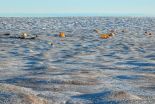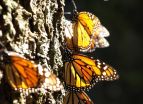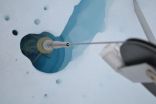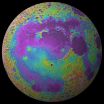(Press-News.org) Researchers at UC San Francisco and Rush University Medical Center, Chicago, may have found a predictor for a disorder affecting kidney transplant recipients that can accelerate organ failure, a discovery that eventually could allow for customized therapies and improved patient selection for transplant.
The study of focal segmental glomerulosclerosis (FSGS), a devastating form of kidney disease, is in the Oct. 1 issue of Science Translational Medicine. Research was conducted by an international study team, with Necker Hospital in Paris and UCSF joint lead authors and Rush University Medical Center and UCSF joint senior authors.
"This is a new blood test to monitor patients before kidney transplant and predict who may have recurrence of FSGS, thereby preventing loss of kidneys," said co-senior author Minnie Sarwal, MD, PhD, professor of transplant surgery at UCSF.
In the kidneys, the glomeruli serve as filters, helping rid the body of unnecessary or harmful substances. After a kidney transplant, scar tissue can form on parts of the donated kidney glomeruli, causing FSGS.
Kidney transplant patients with FSGS face a high risk of disease recurrence, 20-40 percent after a first transplant and up to 80 percent after a second. Its causes are largely unknown and may include circulating proteins and antibodies. Recurrence is managed by immunosuppressive drugs along with current standards of treatment that include salt restriction, diuretics and steroids, plasma filtration, and immunoadsorption.
"The clinical and economic impact of changing the course of FSGS recurrence has far-reaching implications," the study authors wrote. "These include improved graft survival, reduced patient morbidity, reduced cost of salvage therapies including dialysis, and the preservation and increased availability of transplant organs."
In their research, Sarwal and her colleagues used high-density protein tests to process 141 serum samples from 98 patients (64 with FSGS) before and one year after transplant surgery. Patients were from four transplant programs in the United States and Europe.
Of the approximately 9,000 antigens (foreign or toxic substances) screened, the tests identified antibodies against 789 antigens that were significantly increased in patients at risk for FSGS. In further studies using mice, the antibody levels in a protein called CD40 had 78 percent prediction accuracy for FSGS, while a panel of seven out of 10 antibodies that target glomerular antigens increased the accuracy to 92 percent.
As a result, a pre-transplant antibody panel that included anti-CD40 antibodies – named FAST for "FSGS Antibody Screen for Transplant" – could be a good predictor for FSGS. Using FAST, the researchers even learned the antibody signature in FSGS patients remains a year after transplant, despite intensified immunosuppressive therapy and plasma exchange.
"We found that during FSGS recurrence, the antibody binding to the CD40 protein in the podocytes of the kidney drives injury to the kidney's filtering unit with leakage of protein and scar tissue, and blocking this CD40 antibody appears to reverse injury," Sarwal said. "This suggests CD40 blockade in kidney transplant patients may help cure the disease. This drug already is beneficial for organ transplants due to its immunosuppressive properties, so it would be a very attractive new drug for FSGS recurrence prevention in kidney transplants."
Podocytes are cells in the Bowman's capsule of the kidneys that wrap around the glomerulus capillaries. The Bowman's capsule performs the first step in filtering blood to form urine.
Another study highlight is the observation that patient-derived antibodies against CD40 functionally cooperate with a previously identified culprit of FSGS called soluble urokinase plasminogen activator receptor (suPAR). Co-injection of patient-derived CD40 anti-autobodies and suPAR caused enhanced kidney filter failure more than each component did by itself.
"This is an important, novel discovery of a pathogenic antibody synergizing effects with a circulating factor that further sheds light on the enigmatic problem in kidney transplantation, i.e., FSGS recurrence," said study co-senior and co-correspondent author Jochen Reiser, MD, PhD, Ralph C. Brown MD professor and Chairman of Medicine at Rush University Medical Center.
According to Sarwal, additional study of the FAST panel is needed, followed by a clinical trial in collaboration with a pharmaceutical company of an anti-CD40 drug.
"We want to predict FSGS recurrence before we put a kidney in," said Sarwal, who conducted the research while at Stanford University and has since moved her entire lab to UCSF. "We then can treat the high-risk patients with a new drug to possibly prevent disease."
INFORMATION:
Other contributors to the Science Translational Medicine study were Tara Sigdel, PhD, assistant professor of surgery, and Szu-Chuan Hsieh, Sarwal Lab manager, in UCSF Transplant Surgery; Marianne Delville, Guillaume Canaud, Christophe Legendre and Dany Anglicheau, Necker Hospital Department of Kidney Transplantation in Paris; Changli Wei, MD, PhD, associate professor of medicine and Jing Li, Lab manager of Rush University Medical Center, Department of Medicine; Alessia Fornoni MD, PhD, associate professor of medicine University of Miami School of Medicine (UM) Division of Nephrology and Hypertension Peggy and Harold Katz Family Drug Discovery Center; George Burke, MD, professor of surgery, UM Division of Transplant Surgery; Patrick Bruneval, Hôpital Européen Georges Pompidou Department of Pathology in Paris; Maarten Naesens, University Hospitals Leuven Nephrology and Renal Transplantation in Leuven, Belgium; and Annette Jackson and Nada Alachkar, MD, assistant professor of medicine, The Johns Hopkins Incompatible Kidney Transplant Team.
Financial support was provided by National Institutes of Health grants and Novartis.
About UC San Francisco
UC San Francisco (UCSF), now celebrating the 150th anniversary of its founding, is a leading university dedicated to promoting health worldwide through advanced biomedical research, graduate-level education in the life sciences and health professions, and excellence in patient care. It includes top-ranked graduate schools of dentistry, medicine, nursing and pharmacy, a graduate division with nationally renowned programs in basic, biomedical, translational and population sciences, as well as a preeminent biomedical research enterprise and two top-ranked hospitals, UCSF Medical Center and UCSF Benioff Children's Hospital San Francisco. Please visit http://www.ucsf.edu.
About Rush
Rush Medical College was established in 1837 and is one of the oldest medical colleges in the U.S. Rush University Medical Center is one of the largest private academic medical centers in Illinois. Rush is a thriving center for basic and clinical research, boasting state-of-the-art facilities with over 1,600 on-going research projects. Rush has completed the most comprehensive construction and renovation program in its history. The "Rush Transformation" process has invested in new technology and facilities, culminating in a new Tower hospital that opened in January 2012, uniquely designed to deliver patient care safely and efficiently. Rush University has over 2,000 students and offers more than 30 degree or certificate options throughout its three colleges. Rush is consistently ranked as one of the nation's top hospitals by U.S. News & World Report, and is one of the two top ranked hospitals in Illinois.
Predictor of tissue injury in kidney transplant recipients found
UCSF and Rush University Medical Center researchers uncover potential blood test for disorder that can accelerate organ failure
2014-10-01
ELSE PRESS RELEASES FROM THIS DATE:
Researchers find promise in new treatments for GBM
2014-10-01
(Boston) — Glioblastma multiforme (GBM) is one of the most lethal primary brain tumors, with median survival for these patients only slightly over one year. Researchers at Boston University School of Medicine (BUSM), in collaboration with researchers from the City of Hope, are looking toward novel therapeutic strategies for the treatment of GBM in the form of targeted therapies against a unique receptor, the interleukin-13 receptor α chain variant 2 (IL13Rα2).
In a review paper published in the October issue of Neuro-Oncology, the researchers discuss various ...
Team advances understanding of the Greenland Ice Sheet's meltwater channels
2014-10-01
An international research team's field work, drilling and measuring melt rates and ice sheet movement in Greenland is showing that things are, in fact, more complicated than we thought.
"Although the Greenland Ice Sheet initially speeds up each summer in its slow-motion race to the sea, the network of meltwater channels beneath the sheet is not necessarily forming the slushy racetrack that had been previously considered," said Matthew Hoffman, a Los Alamos National Laboratory scientist on the project.
A high-profile paper appearing in Nature this week notes that observations ...
NASA sees intensifying typhoon Phanfone heading toward Japan
2014-10-01
VIDEO:
NASA's TRMM satellite saw Phanfone was producing rainfall over a very large area on Oct. 1. Some storms in these bands were dropping rain at a rate of over 76...
Click here for more information.
An intensifying typhoon called Phanfone that originated east of Guam on September 28, 2014 is headed toward southern Japan. The TRMM satellite crossed above Typhoon Phanfone on October 1, 2014 at 1039 UTC and gathered data about rainfall rates occurring in the storm.
TRMM, ...
Genetic secrets of the monarch butterfly revealed
2014-10-01
The monarch butterfly is one of the most iconic insects in the world, best known for its distinct orange and black wings and a spectacular annual mass migration across North America. However, little has been known about the genes that underlie these famous traits, even as the insect's storied migration appears to be in peril.
Sequencing the genomes of monarch butterflies from around the world, a team of scientists has now made surprising new insights into the monarch's genetics. They identified a single gene that appears central to migration – a behavior generally regarded ...
Gut bacteria are protected by host during illness
2014-10-01
To protect their gut microbes during illness, sick mice produce specialized sugars in the gut that feed their microbiota and maintain a healthy microbial balance. This protective mechanism also appears to help resist or tolerate additional harmful pathogens, and its disruption may play a role in human diseases such as Crohn's disease, report scientists from the University of Chicago in Nature on Oct 1.
"Both hosts and their gut microbiota can suffer in the case of sickness, but this mutually beneficial relationship is guarded by the host," said study senior author Alexander ...
New study explains wintertime ozone pollution in Utah oil and gas fields
2014-10-01
Chemicals released into the air by oil and gas exploration, extraction and related activities can spark reactions that lead to high levels of ozone in wintertime, high enough to exceed federal health standards, according to new NOAA-led research, published today in Nature.
The study comes at a time when new technologies are helping to accelerate oil and gas development in Utah's Uintah Basin, elsewhere in the United States and in many other countries, and its findings may help air quality managers determine how to best minimize the impact of ozone pollution.
When ozone ...
Evolving plumbing system beneath Greenland slows ice sheet as summer progresses
2014-10-01
AUSTIN, Texas—A team led by scientists at the University of Texas at Austin's Institute for Geophysics has for the first time directly observed multiple parts of Greenland's subglacial plumbing system and how that system evolves each summer to slow down the ice sheet's movement toward the sea.
These new observations could be important in accurately modeling Greenland's future response to climate change.
"Everyone wants to know what's happening under Greenland as it experiences more and more melt," said study coauthor Ginny Catania, a research scientist at the institute ...
Winter is coming ... to Titan's south pole
2014-10-01
Titan is unique in our solar system because of its dense nitrogen-methane atmosphere, which is very similar to Earth's in some ways, but very different in others. For example, air temperatures are around 200 degrees colder and, in contrast to the warm salt water seas of Earth, frigid hydrocarbon lakes populate Titan's surface.
Titan has seasons just like Earth, only each season lasts over seven years instead of three months due to its ponderous orbit around the Sun. After equinox in 2009, Titan's south pole entered the perpetual darkness of polar winter. Soon after, ...
Solving the mystery of the 'man in the moon'
2014-10-01
New data obtained by NASA's GRAIL mission reveals that the Procellarum region on the near side of the moon — a giant basin often referred to as the "man in the moon" — likely arose not from a massive asteroid strike, but from a large plume of magma deep within the moon's interior.
The Procellarum region is a roughly circular, volcanic terrain some 1,800 miles in diameter — nearly as wide as the United States. One hypothesis suggested that it was formed by a massive impact, in which case it would have been the largest impact basin on the moon. Subsequent asteroid collisions ...
Origin of moon's 'ocean of storms' revealed
2014-10-01
PROVIDENCE, R.I. [Brown University] — Oceanus Procellarum, a vast dark patch visible on the western edge of the Moon's near side, has long been a source of mystery for planetary scientists. Some have suggested that the "ocean of storms" is part of a giant basin formed by an asteroid impact early in the Moon's history. But new research published today in Nature deals a pretty big blow to the impact theory.
The new study, based on data from NASA's GRAIL mission, found a series of linear gravitational anomalies forming a giant rectangle, nearly 1,600 miles across, running ...
LAST 30 PRESS RELEASES:
Mysterious iron ‘bar’ discovered in famous nebula
World-first tool reduces harmful engagement with AI-generated explicit images
Learning about public consensus on climate change does little to boost people’s support for action, study shows
Sylvester Cancer Tip Sheet for January 2026
The Global Ocean Ship-Based Hydrographic Investigations Program (GO-SHIP) receives the Ocean Observing Team Award
Elva Escobar Briones selected for The Oceanography Society Mentoring Award
Why a life-threatening sedative is being prescribed more often for seniors
Findings suggest that certain medications for Type 2 diabetes reduce risk of dementia
UC Riverside scientists win 2025 Buchalter Cosmology Prize
SETI Institute opens call for nominations for the 2026 Tarter Award
Novel theranostic model shows curative potential for gastric and pancreatic tumors
How beige fat keeps blood pressure in check
Fossils reveal ‘latitudinal traps’ that increased extinction risk for marine species
Review: The opportunities and risks of AI in mental health research and care
New map reveals features of Antarctic’s ice-covered landscape
Beige fat promotes healthy vascular function and blood pressure in mice
Chronic low-dose pesticide exposure reduces the life span of wild lake fish, China-based study shows
Tiny earthquakes reveal hidden faults under Northern California
Long-term pesticide exposure accelerates aging and shortens lifespan in fish
Professor Tae-Woo Lee's research group develops groundbreaking perovskite display technology demonstrating the highest efficiency and industry-level operational lifetime
The “broker” family helps tidy up the cell
Ecology: Mummified cheetahs discovery gives hope for species’ Arabic reintroduction
Researchers survey the ADHD coaching boom
Air pollution and cardiac remodeling and function in patients with breast cancer
Risk of suicide in patients with traumatic injuries
Post–intensive care syndrome
The lifesaving potential of opioid abatement funds
The Frontiers of Knowledge Award goes to Allan MacDonald and Pablo Jarillo-Herrero for their discovery of the “magic angle” enabling science to transform and control the behavior of new materials
Discovery reveals how keto diet can prevent seizures when drugs fail
JMIR Publications and Sikt announce pilot flat-fee unlimited open access partnership
[Press-News.org] Predictor of tissue injury in kidney transplant recipients foundUCSF and Rush University Medical Center researchers uncover potential blood test for disorder that can accelerate organ failure




